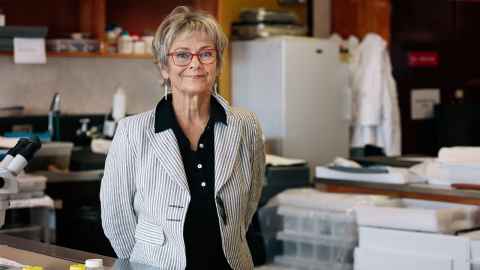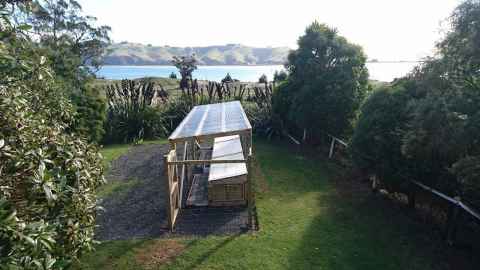Histories woven from waka
Dilys Johns is New Zealand's leading expert in wet organic archaeological conservation.

"My research vision is to continue to weave together traditional information with science to gain a fuller picture of Aotearoa's pre-colonial past, so my projects are interdisciplinary, mixing expertise in conservation science with traditional mātauranga Māori and archaeology.
"This research helps us understand the past in a richer, more comprehensive way, and part of that is handing back not only the physical taonga but knowledge gained as part of the conservation process, to iwi.
"In order to achieve this vision, I changed the practice of archaeological conservation by emphasising the importance of iwi collaboration and taking conservation to the communities who own the taonga.
"When I started working at the University of Auckland in the late 1980s, archaeological conservation projects were limited to in-house research. I started expanding the scope of the laboratory to include off-site projects, establishing satellite treatment facilities to conserve waka and large assemblages. A benefit of this approach has been the long-term genuine research relationships, forged overtime, between conservation science and iwi.
The science I can provide is cold if it is not with its whakapapa.
"These unique, off-site projects also allow taonga to remain close to their recovery location and rohe for treatment — which can take years. To date, 11 satellite laboratories have been established in locations from Auckland to Invercargill and out to the Chatham Islands.
"It's a two-way, symbiotic relationship: the science I can provide is cold if it is not with its whakapapa. I have learnt a huge amount working with iwi over the years, and we've written articles together to ensure both sides of the story are conveyed.

"I have conserved 15 waka (and thousands of portable taonga), studying them with colleagues and Māori experts.
"These projects have provided a large enough sample to begin studying the change in the daily lives of Aotearoa's earliest occupants including canoe manufacture and voyaging over the last 700 years. At present it appears ocean-going waka gave way to smaller local waka, perhaps because there was less reason to travel long distances as New Zealand's population grew.
"Waterlogged wood has been referred to as the Cinderella of conservation; it's not as glamorous as, say, fine art conservation. But it's important because while archaeologists have traditionally studied bone and stone, pre-European-contact Māori routinely used organic materials for their everyday activities, including house and waka construction, clothing, domestic and gardening implements, so conservation of organic objects helps to impart a broader picture of Aotearoa's past.
Archaeological sites are eroding into the sea due to climate change.
"The water in the cells of a degraded waterlogged object helps the object keep its shape — however, as soon as it's exposed to oxygen and drying commences, deterioration accelerates so you have to intervene immediately.
"Up until a few decades ago, waka were probably removed from the environment that had allowed them to survive, and dried, which would have resulted cracking, warping and in worst case scenarios complete disintegration. Today, we replace that water in the cells with polyethylene glycol, a non-toxic chemical whose molecules are small enough to enter the plant cells, allowing the artefact to keep its shape during controlled drying.
Waterlogged wood has been referred to as the 'Cinderella of conservation'.
"Currently the workload is increasing, partly because of degrading coastlines where archaeological sites are eroding into the sea due to climate change. I frequently get contacted about artefacts that have been uncovered at new sites due to storm events and keep my field bag prepared for urgent requests which frequently lead to larger research projects.
"Now that laboratory processes and protocols are well-established, I am looking forward to turning my attention to synthesising decades of knowledge as part of my PhD to create a lasting legacy for future generations of iwi and researchers."